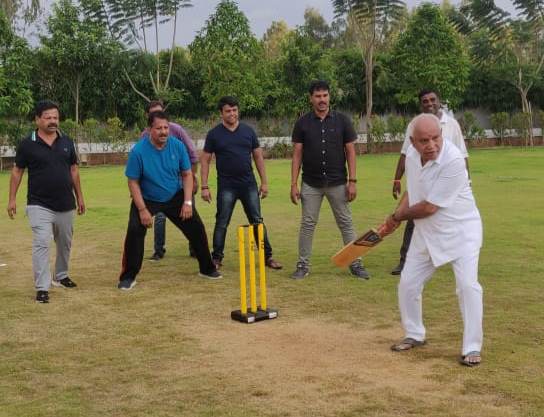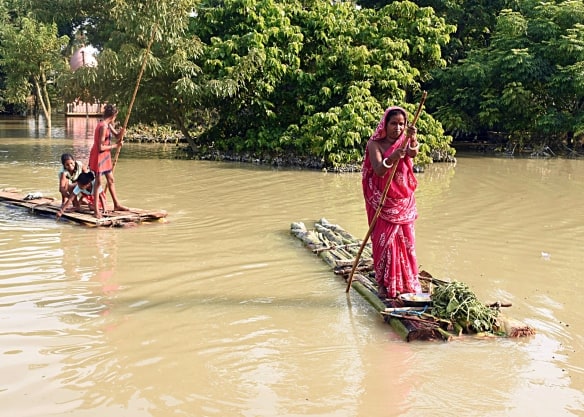
Month: July 2019

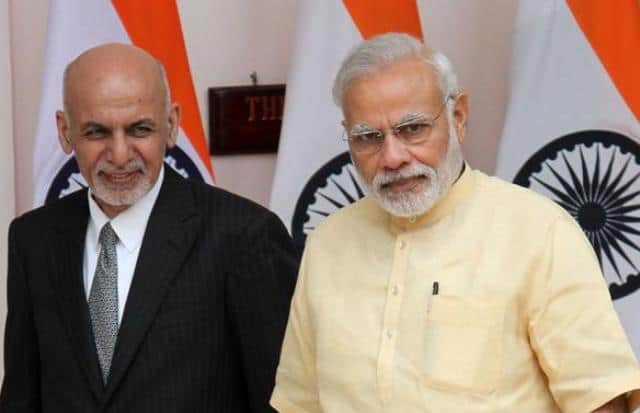
Has Trump Plan Edged India Out Of Afghanistan?
A minor casualty ahead: Screening of Indian films in Kabul cinemas. ‘The End’ does not herald the typical triumph-of-good-over-evil. The do-gooder, now dispensable, can only hope to hum “kabhi alvidaa na kehna.”
There is nothing filmy about India being cast aside after 18 years of investment in goodwill and $3billion in development of the Afghan people who have no say in the way outsiders are hurtling towards a “peace agreement” to end a long-drawn conflict, whatever that costs.
There is a strong sense of déjà vu. India was close to the Soviets in the 1980s. When they quit Afghanistan and eventually disintegrated, India earned some opprobrium and went ‘friendless’. And the West withdrew triumphantly, leaving behind the mess.
ALSO READ: India Must Keep Its Food In The Door
India is now with the government in Kabul that the West helped create and supported, but is ready to ditch. With differing interests, all players seem keen to help the United States extricate itself. For, President Donald Trump must “get the boys back home” in time for his re-election bid next year.
How can you solve this conflict when its fundamentals are ignored? The players don’t want to await outcome of the Afghan presidential polls scheduled for September 28. They are ready to push the Ashraf Ghani Government towards mortuary.
All those who root for democracy want to sidestep this democratic exercise. How is democracy served when an elected government is given no role in the peace parleys at the behest of one of the participants? Isolated, India opposes it. But none of its concerns cut much ice with any of the players – democrats or otherwise. Even former President Hamid Karzai, an old Delhi-ally, is with the peace dialogue.
Afghanistan is the second-largest recipient of Indian foreign aid over the last five years. Although it launched its ‘soft’ diplomatic drive with free distribution of Lagaan film cassettes, India’s popular transcends Bollywood films. It set up infrastructure, including hospitals, roads and dams, and contributed to building of institutions, training of civil servants and students in Indian universities. New Delhi’s support to Karzai and Ghani insured India’s primary investments and attracted others. Will all this go in vein?
Everyone is suing for peace with Taliban who are calling the shots, literally, holding talks even as they kill civilians, including school children. At their meeting at Doha recently, “all participants agreed” to bring down civilian casualties in the country to “zero” and to ensure the security of schools, hospitals and markets. Afghans would say: Thank You, Taliban, and Thank You, negotiators, for this mercy.
The players’ line-up is impressive – only they are not impressed with India’s role. Trump once asked India, China and others in the region to send troops – in effect, to pull his chestnuts out of fire. Some of his apologists are now blaming India for not taking the offer.
India gets hyphenated with Pakistan by the way the US plans to withdraw from Afghanistan, leaving Islamabad as the principal policeman and guarantor of peace and stability. This is despite knowing well how Islamabad performed that role earlier.
ALSO READ: US Exit Holds Scary Prospects
Russia was once an India ally and so was Iran. China is now firmly a Pakistan ally. All of them are convinced that the threat from the Islamic State (IS) is greater than Al Qaida or anyone else. British, the original imperialists who failed to rule Kabul from Calcutta (now Kolkata) and New Delhi want to stay relevant. Saudi Arabia and the UAE are bailing out Pakistan from its economic stress as Mr Trump’s proxies.
Trump will be hugging Imran Khan in Washington next week. Eighteen months back, while still unsure whether to quit or not from Afghanistan, Trump had condemned Pakistan’s “lies and deceit” in fighting terrorism. His rant was about Pakistan not preventing — actually nurturing – Taliban and the Haqqani network that attack American interests in Afghanistan. The Haqqanis are not mentioned — not publicly at least. Presumably both ‘good’ and ‘bad’ Taliban are being engaged and their mentor Pakistan is on the talks table.
Never really out of American calculations, Pakistan enjoys a win-win situation. It has moved away from America’s threatening embrace to China’s calculatedly welcoming one. It is riding piggyback on China that matters, not just with regard to Afghanistan, but globally.
India is clearly isolated but it has itself to blame. It has failed to anticipate that the US would leave Afghanistan someday and for that it would need Pakistan. One is waiting to have a glimpse of its contingency plan. At least, some behind-the-scene contacts with those who are vary of Taliban and their Pakistan sponsorship.
India has had two priorities in Afghanistan: To prevent Pakistan from setting up a friendly government in Kabul again, like in 1996 with the Taliban of Mullah Omar and, secondly, to avoid the return of jihadi groups that which could strike in India. On both fronts, India is losing ground.
India has been telling its domestic audience and anyone who cares to listen that Pakistan is being ‘isolated’ because of its terror credentials. But today, on Afghanistan at least, Pakistan is a key facilitator. The US, Russia and China meeting last week ‘invited’ Pakistan to discuss the peace moves in Afghanistan. None from Afghanistan, especially the Ghani Government was present – so scared everyone is of Taliban.
Al Qaida was the reason the US invaded Afghanistan. It is passé today. The Islamic State (IS) is the new global specter. That the Qaida chief Aiman Al Zawahiri recently renewed calls to his followers to inflict punitive losses on the Indian authorities in Kashmir and elsewhere should worry only India. And India would naïve if it expects anyone else to help it beyond harsh warnings and heavily-worded resolutions.
Proximity to Moscow, by hindsight, was never so debilitating. Today, India’s hands are tied down by proximity with the US. Indeed, two pillars of India’s regional foreign policy are shaken because of the American strategy in the region — the relationships with Iran and Afghanistan.
One big casualty is Iran’s Chabahar port through which India connects with Afghanistan’s western flank and to Central Asia. A non-starter due to American hostility towards Tehran, it gained momentum after Obama’s rapproachement. But after its reversal by Trump (meant to spite Obama, we are now told) New Delhi has had to admit that it cannot further develop Chabahar when shippers and cargo handlers are kept away by US sanctions on Iran.
Whatever be the content of the Peace Agreement, still in works, it is clear that Afghanistan will remain the deadliest conflict zone in the world in 2019, far surpassing the levels of violence witnessed in Syria, Yemen, Iraq, and other hotspots.
There will be no victors this time – it will be a victory-less withdrawal, whatever the icing on the “peace cake” now being baked. Every player knows this, but won’t admit — that you are likely to leave behind a mess, again. It could entail another round of the Great Game in future for control of this hapless nation.
The writer can be reached at mahendraved07@gmail.com
]]>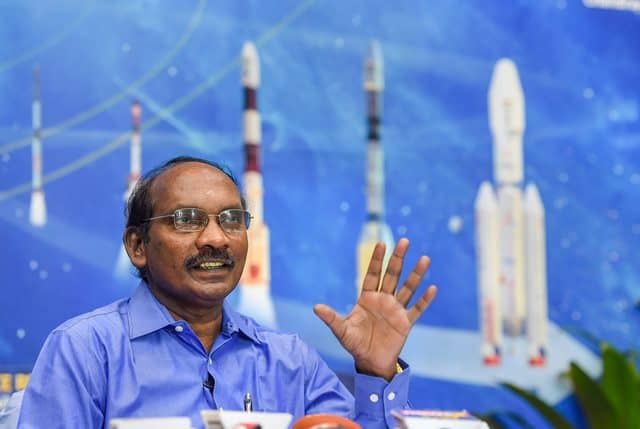
ISRO To Launch Chandrayaan-2 On July 22
Late on Monday night, in a last-minute revision of schedule, the ISRO announced that the launch of India’s second lunar mission ‘Chandrayaan-2’ has been called off due to a technical snag.
“Chandrayaan-2 launch, which was called off due to a technical snag on July 15, 2019, is now rescheduled at 2:43 pm IST on Monday, July 22, 2019. #Chandrayaan2 #GSLVMkIII #ISRO,” ISRO informed in a tweet on Thursday.
“A technical snag was observed in launch vehicle system at 1 hour before the launch. As a measure of abundant precaution, Chandrayaan2 launch has been called off for today. The revised launch date will be announced later,” the ISRO had tweeted minutes ahead of the scheduled launch on Monday.
The country’s second lunar spacecraft was to be launched onboard a Geosynchronous Satellite Launch Vehicle (GSLV) Mk-III from Satish Dhawan Space Centre at Sriharikota in Nellore district of Andhra Pradesh at 2:51 am.
Chandrayaan-2, which has home-grown technology, will explore a region of Moon where no mission has ever set foot. According to ISRO Chairman Kailasavadivoo Sivan, the landing site, at a latitude of about 70 degrees south, is the southernmost for any mission till date.
The spacecraft consists of an orbiter, a lander, and a rover together referred to as “composite body”. The probe’s total mass is 3.8 ton and it is expected to land on Moon’s south polar region on September 6 or 7 this year.
It will be the first Indian expedition to attempt a soft landing on the lunar surface. This mission will make India the fourth country after the US, Russia, and China to carry out a soft landing on Moon.
(ANI)
]]>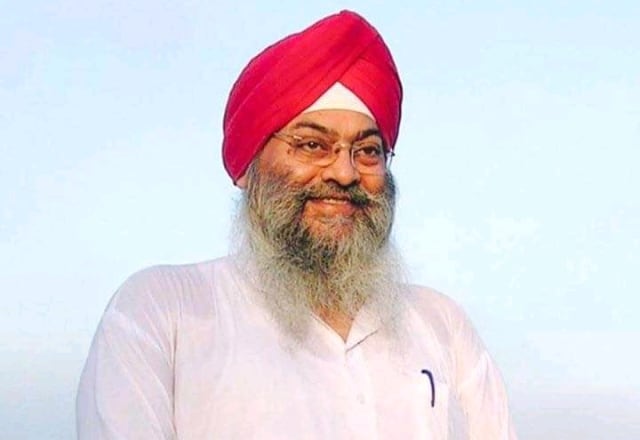
‘We Treat Mother Ganga Poorly’
Gurbinder Singh, 63, an environmental activist from Moradabad, UP, has spent past four decades running campaigns to clean and protect his beloved ‘Ganga Maiya’. “We call her mother, but we don’t treat her well,” he points out.
I still remember how clean the Ganga was when I was young. We used to bathe in the river every day. Slowly, as industrialization took over (and Uttar Pradesh has a high concentration of factories of various kinds), Ganga and her tributaries started getting dirtier and dirtier to the point that its biodiversity is nearly dead and it won’t be too long before we completely run out of fresh clean water.
One must travel to the source of these rivers to see what we are missing. The dolphins, otters, alligators, crocodiles and turtles that thrived in the waters of Ram Ganga (a tributary of Ganga) till a few decades ago, have disappeared.
ALSO READ: ‘My Skin Itches After Ganga Bath’
After the Namami Gange project was started in 2014, we have definitely seen a lot of change. During the recent ardh-Kumbh held in Prayagraj, the river was a lot cleaner than before. But these are only surface-level changes. The state government had halted operation of many polluting industrial units causing pollution and tanneries in Kanpur. We need permanent changes, which includes changing mind-sets and age-old habits of people who see a flowing river as a dumping ground of their wastes.
We have been taught to regard rivers as mothers. We call Ganga and Yamuna as ‘Ganga Maiya’ and ‘Yamuna Maiya’, but do we really mean what we say? You don’t just conserve your mother, you continuously care for her and work to keep her happy and flourishing.
The Ganga starts getting dirty at Dhampur (Uttar Pradesh) where tonnes of effluents from sugar mills are released into the water. The condition is the same in Sheohara. Kanth tehsil sees waste (mostly bleach) from the bandage industry going into the river. Agwanpur has sugar and paper industries. Moradabad has heavy metals workshop in almost every house in the bastis near river banks. The metallic waste from these workshops consist of cadmium, cyanide, different kinds of acids make their way to the rivers. Kilns on river banks, which are used to purify brass make things worse. Besides this, effluents such as dyes, bleach from garment industries which are mushrooming all over the region are very common.
For nearly four decades, I have run campaigns to keep Ganga and its tributaries clean. I have worked in close coordination with Worldwide Fund (WWF) to see how lifestyles of local people affect their environment and I realized that the general population can’t do much until they are given better employment options and treated with dignity.
If we want to revive our rivers, we have to revive our common populace first and work in tandem to find solutions. The land mafia, the sand mafia, the over-population, mountains of waste, all kinds of pollution, that pose a threat to our environment need to be tackled very swiftly and strongly. The government has to find the root cause of river pollution and find a solution.
Some officials associated with the Namami Gange project, plus officers at Public Works Department (PWD) as well as the District Magistrate of Moradabad are taking a keen interest in improving the state of our rivers. They hold regular meetings with us, but we hit a roadblock, when it comes to changing mindsets and old habits. However, the positive news is that many people are waking up to environmental concerns because of water shortage in their homes and many people now want to be involved with our Moradabad Nagrik Samaj.
While talking with representatives from the Namami Gange project we also make it a point to introduce them to new state-of-art as well as traditional methods of cleaning rivers We are highly influenced by the work of Balbir Singh Seechewal (Seechewal literally means ‘the one who nourishes’) who was awarded the Padmashree by the government in 2017.
Seechewal Ji, a 57-year-old Nirmala saint, spearheaded a campaign against river pollution in Punjab. He spread his message of self-help in taking care of the environment and quoted instances from Gurbani, where emphasis has been laid on keeping the environment clean. The message has found a lot of takers. Along with the help of locals, he resurrected the 110-miles long Kali Bein rivulet. It is believed that Guru Nanak attained enlightenment after taking a bath in this rivulet. Kali Bein now has a flourishing biodiversity. If he can do it, we can do it too.
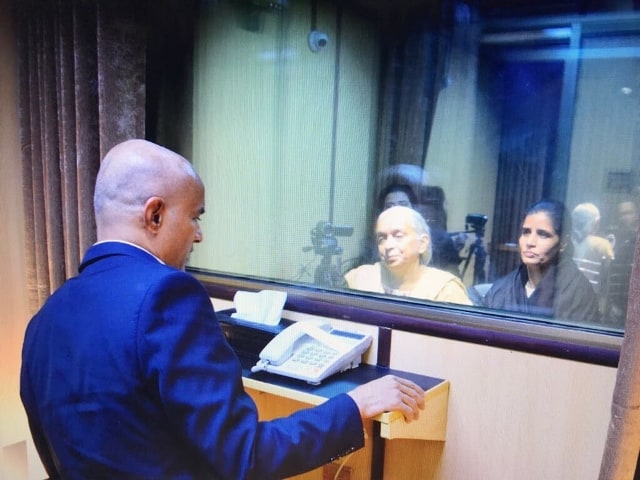
ICJ Asks Pak To Review Jadhav's Conviction
“The Court has directed Pakistan to provide effective review and reconsideration of his conviction and sentences. ICJ has ruled in favour of India on merits, affirming Jadhav’s right to consular access and notification,” tweeted Reema Omer, international legal advisor, South Asi, of the ICJ.
“The Court has, however, rejected most of the remedies sought by India, including annulment of military court decision convicting Jadhav, his release and safe passage to India,” she added. (ANI)
]]>Pakistan Arrests Hafiz Saeed, Yet Again
Quoting CTD sources, The Dawn reported that Saeed was on his way to an anti-terrorism court (ATC) in Gujranwala to seek bail, when he was arrested.
Sources added that Saeed has been sent to judicial custody to an unknown location for questioning.
Meanwhile, reacting to the development, the special public prosecutor in 26/11 terror attack case Ujjwal Nikam said in Mumbai on Wednesday that JuD chief Hafiz Saeed’s arrest was a “drama.”
“Pakistan is fooling the world that they have arrested him. We have to see how they produce evidence in courts and how efforts are made to convict him. Otherwise, it is a drama,” he told ANI.
Saeed’s arrest came two days after a Pakistan anti-terrorism court in Lahore had granted pre-arrest bail to him in a case of illegal use of land for a seminary.
The court had granted interim bail to Saeed and three other accused until August 31 against surety bonds of Pak Rs 50,000 each.
On July 3, top 13 leaders of the banned JuD, including Saeed and Naib Emir Abdul Rehman Makki, were booked in nearly two dozen cases for terror financing and money laundering under the Anti-Terrorism Act, 1997.
The CTD, which registered the cases in five cities of Punjab, had stated that JuD was involved in terror funding collected through charitable organisations including Al-Anfaal Trust, Dawatul Irshad Trust, and Muaz Bin Jabal Trust.
In February, Paris-based Financial Action Task Force (FATF) had warned Pakistan to deliver on its commitment to curb terror financing and money laundering.
Pakistan may be blacklisted by the watchdog as it is already on the “grey list” of countries who have been inadequate in curbing money laundering and terror financing.
In the wake of previous warnings by the FATF, Pakistan had re-instated a ban on two terror outfits linked to Saeed, namely, JuD and the Falah-e-Insaniat Foundation in February.
The move had come amid global pressure against Pakistan to clamp down on terror groups following the Jaish-e-Mohammed (JeM) initiated terror attack in Jammu and Kashmir’s Pulwama district that killed 40 paramilitary forces in February this year.
India has time and again called for creating trust and environment free of violence and terrorism for fostering peace and prosperity in the region. (ANI)
]]>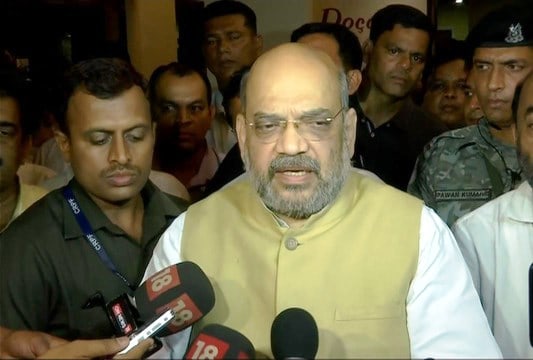
Will Deport All Illegal Immigrants: Shah
“We will identify all the illegal immigrants and infiltrators living on every inch of this country and deport them as per the international law,” the BJP chief said in the Rajya Sabha.
This comes a day after the Central government has observed that it has adopted a multi-pronged approach to ensure effective surveillance and domination of international borders to check infiltration of illegal immigrants.
The Ministry of Home Affairs had said in a written reply to Parvesh Sahib Singh in Lok Sabha that physical infrastructure like border fencing, floodlighting, construction of border roads and establishment of border outposts have been created.
It had informed that border guarding forces conduct regular patrolling and establish observation posts and carry out anti-tunnelling exercises to stop illegal infiltration. However, some illegal immigrants are still able to enter into India in a clandestine and surreptitious manner, mainly due to difficult mountainous and riverine terrain in parts of the long international borders.
The Ministry had said that to deal with such illegal immigrants, the powers of the Central government under Section 3 of The Foreigners Act, 1946, have been enforced to detect detain and deport illegal foreign nationals.
The exercise to update NRC 1951 is being conducted under special provisions in respect of State of Assam under The Citizenship Act, 1955 and The Citizenship (Registration of Citizens and issue of National Identity Cards) Rules, 2003, it had read. (ANI)
]]>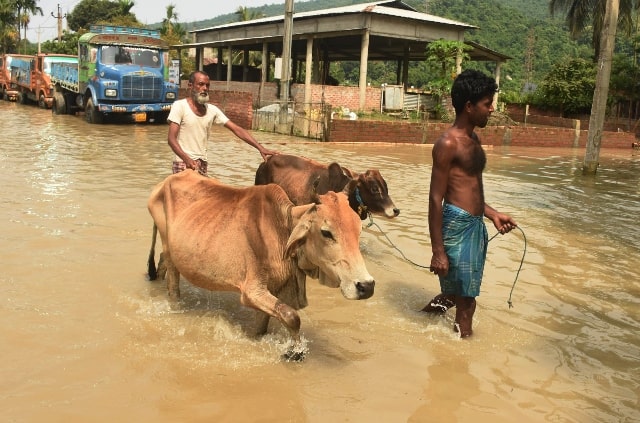
Assam Villagers Move Cattle From Flood Zone
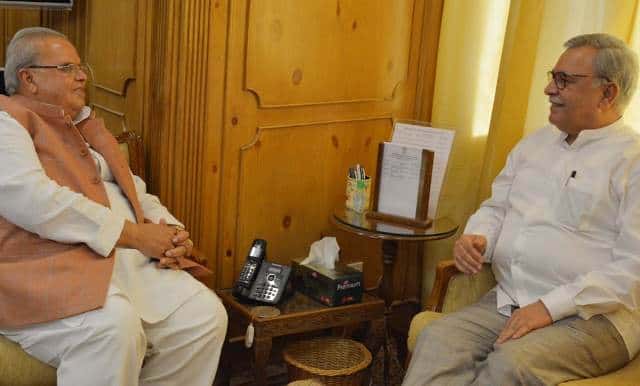
J&K Governor Gets A New Adviser
